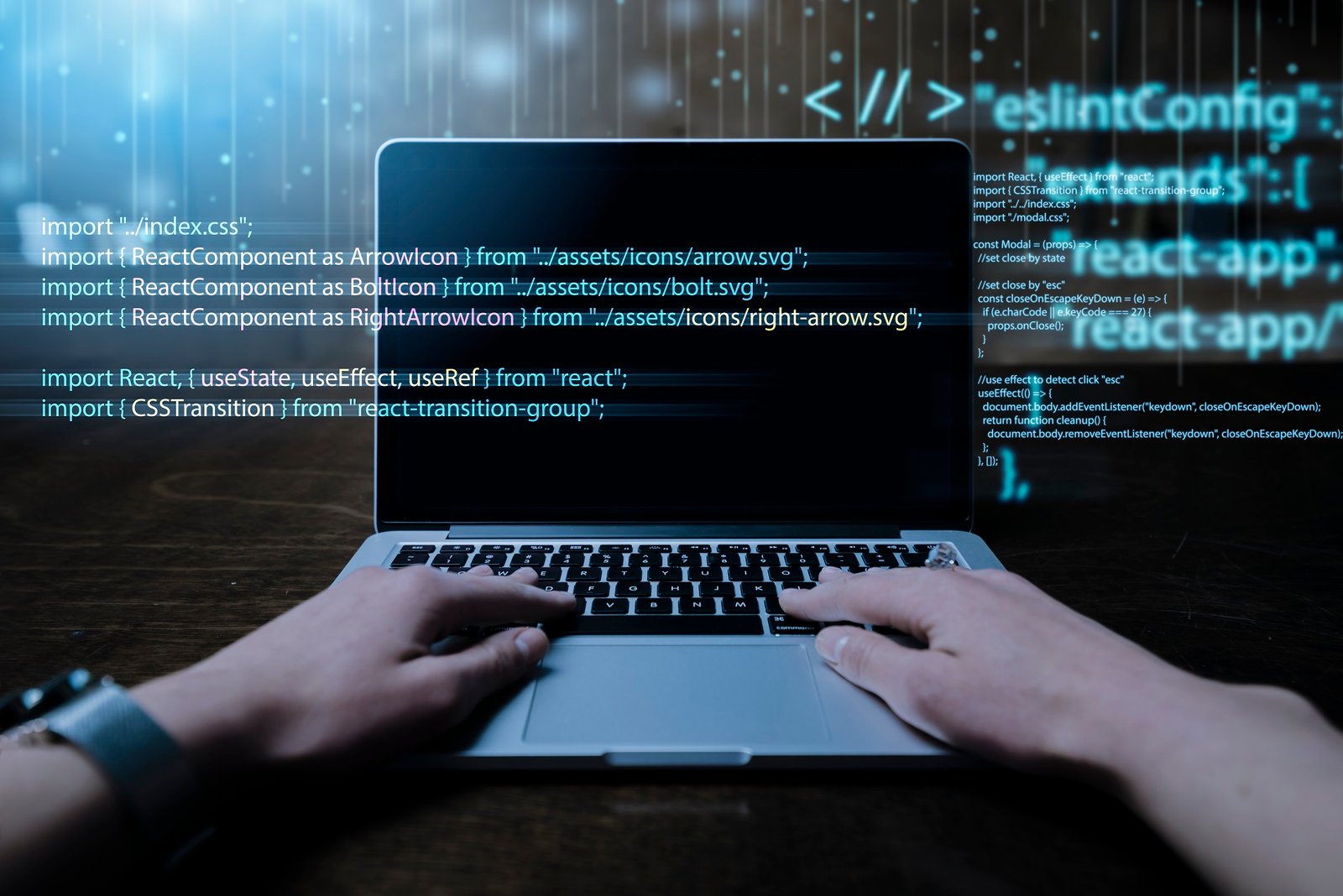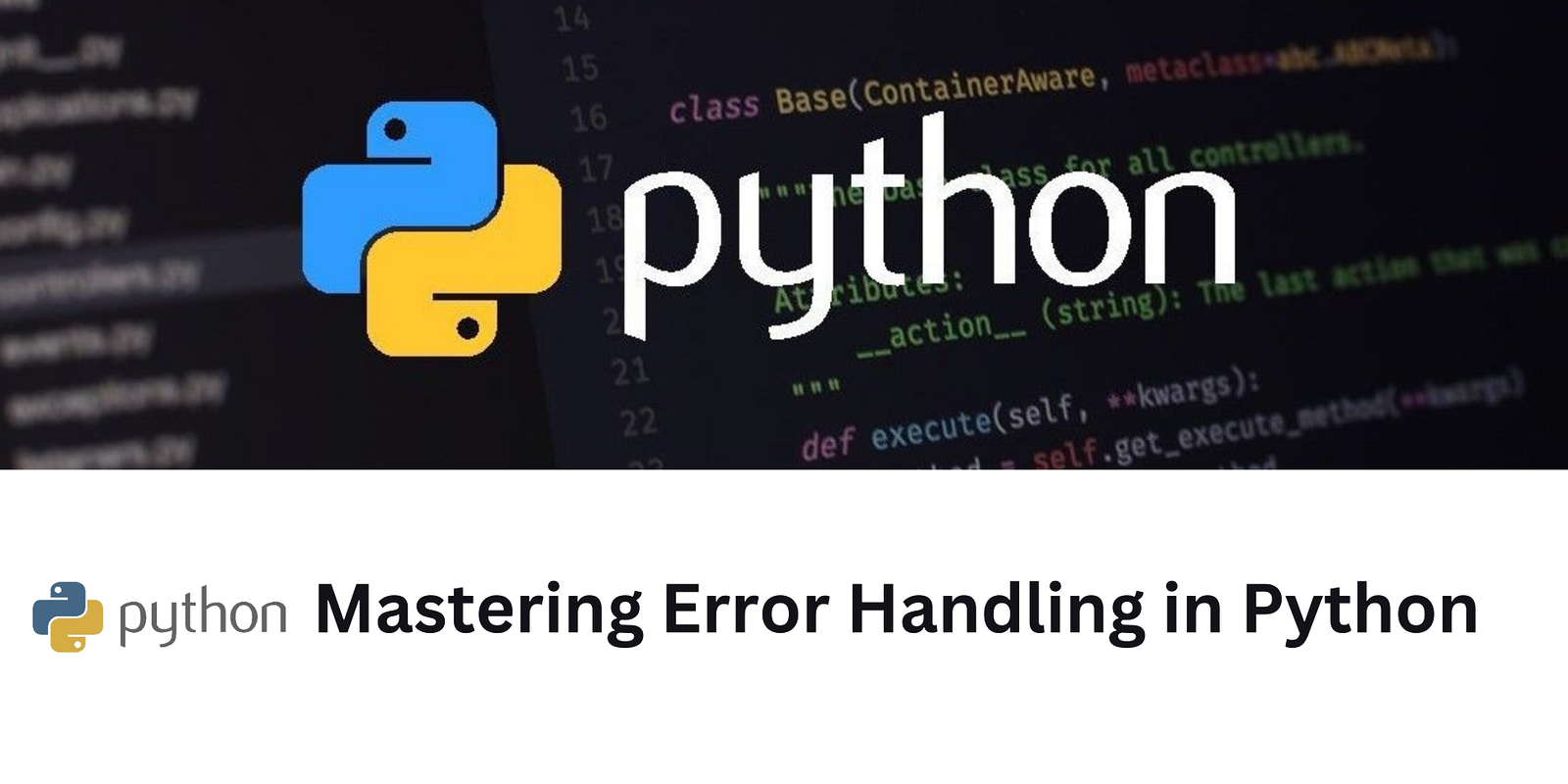Mastering Error Handling in Python for Smooth Coding
One of the most important programming components that could break or enhance your code’s operation is error handling. Knowing the subtleties of error management is crucial for tech enthusiasts, Python developers, and beginners in programming. Along with best practices, typical errors, and real-world examples, this thorough guide looks at exception handling in Python using try, except, finally, and raise. By the end of this post, you will have the tools to produce robust, error-free Python code. Read MASTERING OOPS PROGRAMMING IN PYTHON
Introduction to Error Handling in Python
Programming calls for mistakes as an unavoidable reality. Whether your experience level is high or low, you will routinely run across errors. However, the ability of competent programmers to smoothly address these mistakes distinguishes them.
Python’s error handling guarantees that your program can handle unanticipated events and keep running either successfully or failing elegantly. This article will bring you through the core of Python error handling using concise explanations and real-world examples.
Understanding Exceptions: What Are They and Why They Occur
Python exceptions disturb the usual running flow of a program. They might arise from erroneous user input, file not found, or division by zero, among other things. Unlike syntax mistakes the Python interpreter finds while parsing, exceptions are seen running.
Managing exceptions successfully starts with knowing why they arise. Typical exceptions are `TypeError`, `ValueError`, `IndexError`, and `FileNotFoundError`. Every exception offers an insightful analysis of your code’s faults.

Exception Handling Using `try` and `except` Blocks
The Python `try` and `except` blocks are among its most basic structures for managing exceptions. While the `except` block runs should an exception arise, the `try` block features the code that may cause an exception.
Syntax and Example
Here’s a simple example to illustrate how `try` and `except` work:
“`
try:
result = 10 / 0
except ZeroDivisionError:
print(“You can’t divide by zero!”)
“`
In this example, the `try` block attempts to divide 10 by 0, which raises a `ZeroDivisionError`. The `except` block catches this exception and prints an error message instead of terminating the program.
Using Multiple `except` Blocks
Python allows multiple `except` blocks to handle different types of exceptions:
“`
try:
num = int(input(“Enter a number: “))
result = 10 / num
except ValueError:
print(“That’s not a valid number!”)
except ZeroDivisionError:
print(“You can’t divide by zero!”)
“`
In this example, we handle both `ValueError` and `ZeroDivisionError` separately, providing specific error messages for each case.
The Role of `Finally` and Its Usage in Exception Handling
The `finally` block executes code that should run regardless of whether an exception occurs. This is particularly useful for cleanup actions, such as closing files or releasing resources.
Syntax and Example
Here’s an example to demonstrate the use of `finally`:
“`
try:
file = open(‘example.txt’, ‘r’)
content = file.read()
except FileNotFoundError:
print(“The file was not found.”)
finally:
file.close()
print(“File closed.”)
“`
In this example, the `finally` block ensures that the file is closed regardless of whether an exception is raised.
Ensuring Resource Management
Using `finally` is essential for managing resources effectively. It guarantees that crucial actions, such as closing files or network connections, are performed even if an error occurs in the `try` block.
Raising Exceptions in Python Using the `raise` Statement
Sometimes, you must raise exceptions intentionally to signal that something has gone wrong. The `raise` statement allows you to do this with built-in or custom exceptions.
Syntax and Example
Here’s how you can use `raise` with built-in exceptions:
“`
def calculate_age(year_of_birth):
if year_of_birth > 2023:
raise ValueError(“Year of birth cannot be in the future!”)
return 2023 – year_of_birth
try:
age = calculate_age(2025)
except ValueError as e:
print(e)
“`
In this example, we raise a `ValueError` if the birth year is greater than the current year, ensuring the function behaves correctly.
Creating Custom Exceptions
You can also create custom exceptions by subclassing the built-in `Exception` class:
“`
class InvalidAgeError(Exception):
pass
def set_age(age):
if age < 0:
raise InvalidAgeError(“Age cannot be negative!”)
try:
set_age(-1)
except InvalidAgeError as e:
print(e)
“`
Custom exceptions allow you to handle specific error conditions unique to your application.

Best Practices and Common Mistakes in Exception Handling
While exception handling is powerful, following best practices to avoid common pitfalls is crucial.
Catch Specific Exceptions
Always catch specific exceptions rather than using a generic `except` block. This ensures that you handle only the exceptions you expect and not all possible errors.
Avoid Silent Failures
Avoid silently catching exceptions without any logging or error messages. This can make debugging difficult and obscure the root cause of issues.
Use Meaningful Error Messages
Provide meaningful error messages when raising or catching exceptions. This helps users and developers understand what went wrong and how to fix it.
Real-World Examples of Exception Handling in Python
Let’s explore a few examples to understand better how exception handling works in real scenarios.
File Operations
When working with files, it’s crucial to handle exceptions to ensure the file operations are performed safely:
“`
try:
with open(‘data.csv’, ‘r’) as file:
data = file.read()
except FileNotFoundError:
print(“The file was not found.”)
except IOError:
print(“An error occurred while reading the file.”)
“`
API Requests
Handling exceptions in API requests ensures your program can gracefully manage network issues:
“`
import requests
try:
response = requests.get(‘https://api.example.com/data’)
response.raise_for_status()
data = response.json()
except requests.exceptions.HTTPError as http_err:
print(f”HTTP error occurred: {http_err}”)
except requests.exceptions.RequestException as err:
print(f”An error occurred: {err}”)
“`
Conclusion Importance of Robust Error Handling and Its Impact on Code Quality
Writing excellent Python code depends much on solid error handling. It guarantees that your program can elegantly control unanticipated events, improving user experience and simplifying troubleshooting.
Understanding and using the ideas of try, except, finally, and raise will help you create more maintainable and resilient code. To maximize Python’s exception-handling features, adhere to best standards, and avoid typical errors.
Are you ready to raise your Python competency? Discover other materials and join our developer community to keep your educational path active. Joyful coding!

Frequently Asked Questions (FAQ)
Python exception handling is what?
Python’s exception-handling system lets the program gracefully stop or continue running in case of runtime problems. It uses try, except, finally, and raise statements to handle and control exceptions.
Why should I handle exceptions?
Exception handling strengthens and increases the dependability of your code. Offering informative error messages helps prevent crashes, gently manage unanticipated events, and ease troubleshooting.
What are some typical built-in Python exceptions?
Typical built-in exceptions are `ValueError`, `TypeError`, ` ZeroDivisionError`, ` FileNotFoundError`, and ` IndexError`. Each is meant to address particular kinds of mistakes.
Can I design my unique exceptions?
Python allows you to build custom exceptions by subclassing the native `Exception` class. Custom exceptions let you manage error scenarios that are particular to your program.
How do I ensure resources are correctly released in case of an exception?
Use the `finally` block or context managers (using the `with` statement) to ensure resources like files or network connections are correctly released, regardless of whether an exception occurs.
What does the `raise` statement do?
The `raise` statement intentionally triggers an exception. This can be useful for signaling error conditions in your code and handling them appropriately using the `try` and `except` blocks.
Should I catch every exception in my code?
No, catching only specific exceptions you can handle is considered best practice. Catching all exceptions using a generic `except` block can obscure the root cause of issues and make debugging difficult.
How can I provide helpful error messages?
When raising or catching exceptions, include meaningful error messages that describe the problem and, if possible, how to resolve it. This helps users and developers understand what went wrong.
What are some common mistakes to avoid when handling exceptions?
Common mistakes include:
- Catching exceptions too broadly.
- Failing to log or provide error messages.
- Not ensuring resources are correctly released.
Following best practices helps avoid these pitfalls and enhances code quality.
Where can I learn more about Python exception handling?
You can learn more by exploring the official Python documentation, taking online courses, reading books on Python programming, and joining developer communities for shared knowledge and experience. Happy coding!
